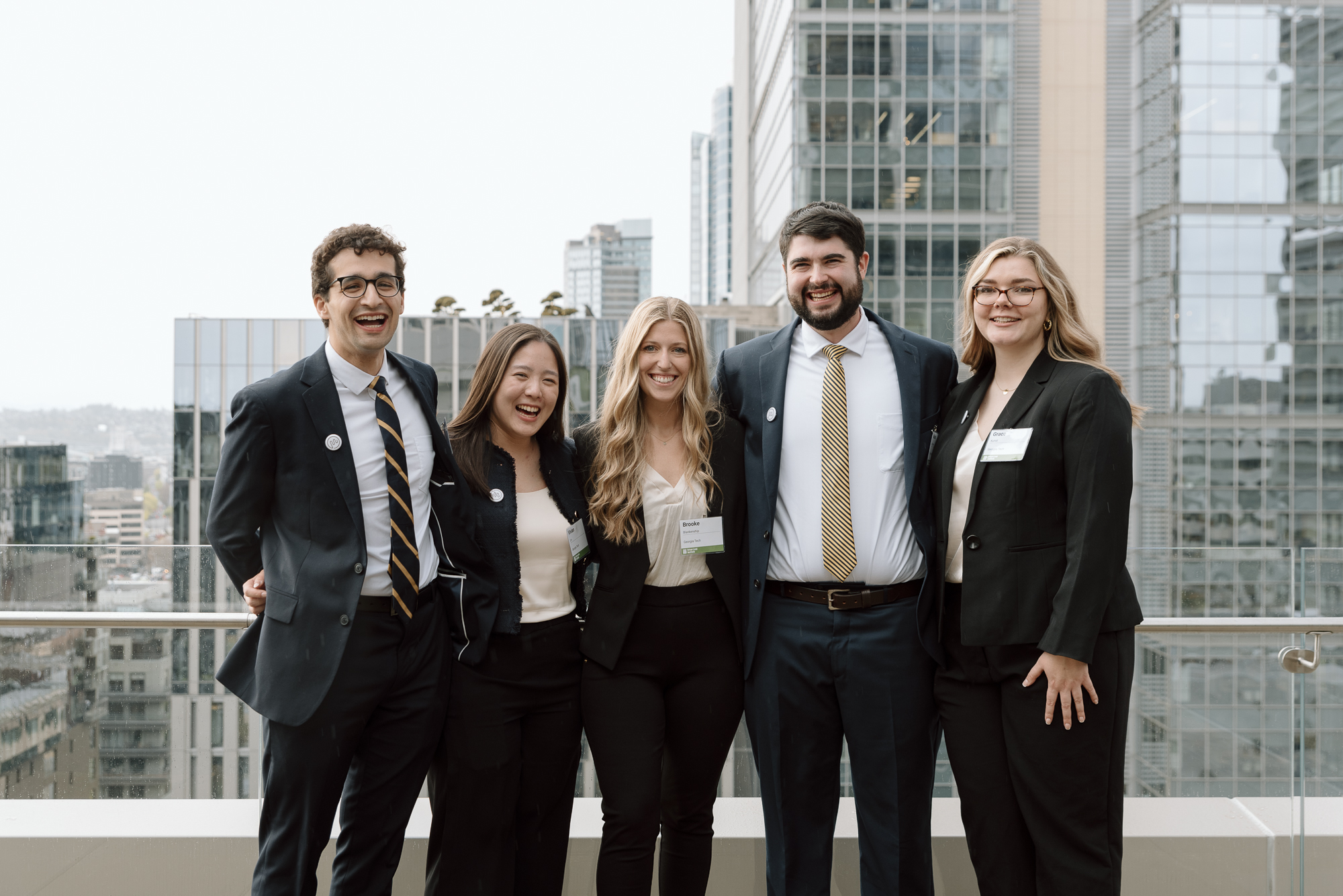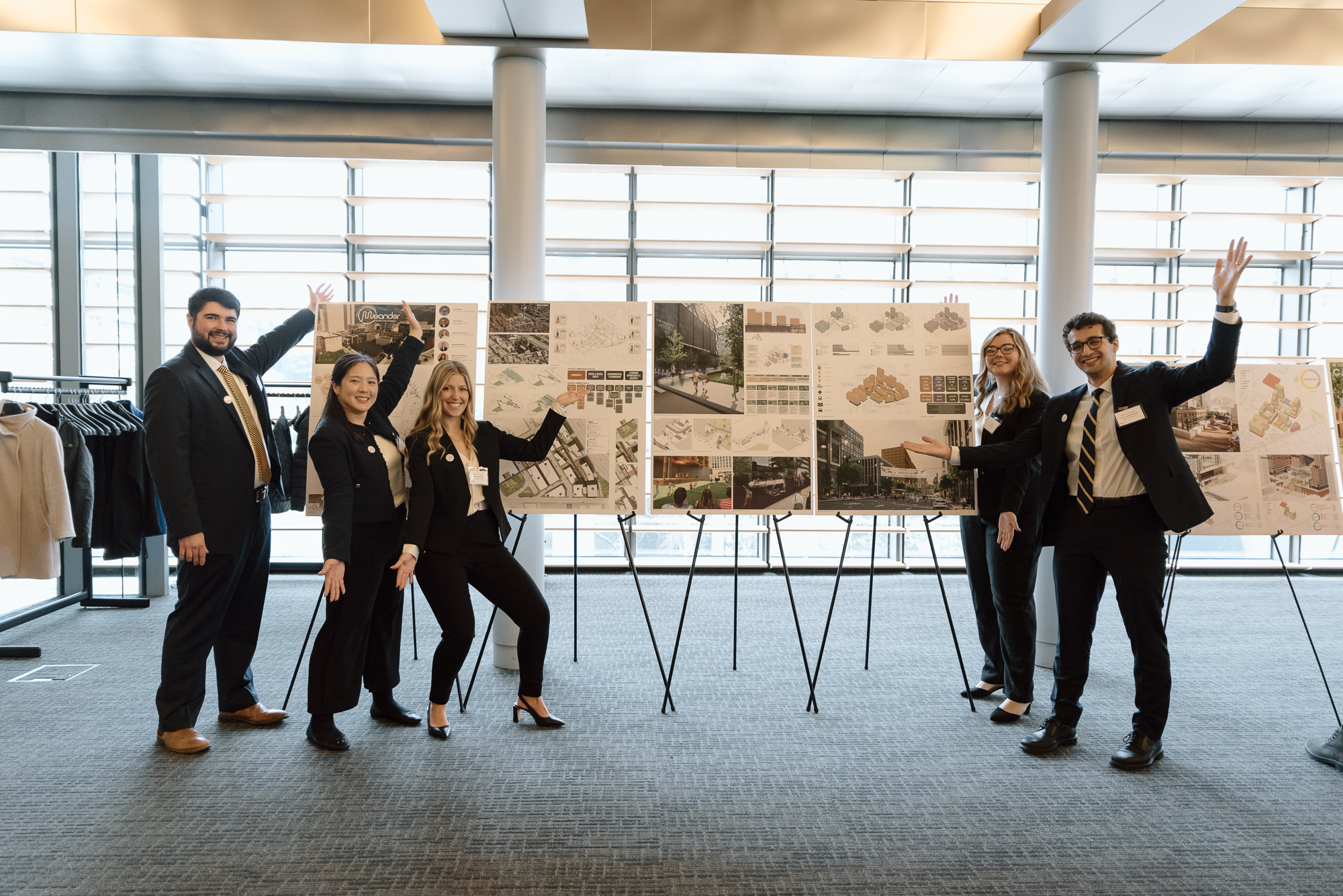

A redevelopment plan for a Seattle site presented by a team of Georgia Institute of Technology students has taken top honors in the 22nd annual ULI/Gerald D. Hines Student Urban Design Competition. The Competition was created with a generous endowment from long-time ULI leader Gerald D. Hines, founder of the Hines real estate organization.
The ideas contest provides graduate students with the opportunity to devise a comprehensive design and development scheme for a large-scale site in an urban area. The winning team will receive a prize of $50,000. The remaining three finalist teams, with representatives from the University of Maryland, College Park, Georgia Institute of Technology, and the University of Texas at Austin, will each receive $10,000.
This year’s competition asked students for proposals to create a vibrant mixed-use, mixed-income area in downtown Seattle, Wash. Working in partnership with King County who has been leading local planning efforts for the site, ULI created a challenge brief with input from local stakeholders including the City of Seattle asking the students to address issues of equity, housing affordability, access to neighborhood services, sustainability, and connectivity to surrounding communities.
“I was impressed by the level of professionalism displayed across all four teams. Each of the finalists presented a compelling vision for transforming downtown Seattle’s South End. As a long-time resident of the neighborhood, I eagerly await seeing these ideas brought to fruition,” said Ty Bennion, Senior Managing Director, Hines.
The four teams that advanced to the final round of the competition were chosen from 59 entries by a jury of 12 leading ULI members from across the country. More information about the four finalists announced can be found here.
In March, the students from the finalist teams toured the competition site, rehearsed their proposals, and received feedback from local ULI members. On April 4, they presented their plans in person to the full jury.
The winning plan from Georgia Institute of Technology, titled Meander, is a vision for part of the Downtown Seattle area designed to address challenges posed by the post-COVID environment, social inequality, and climate change. The team was comprised of Noah Stogner, Grace Kunst, Arthur Santos Miranda, Vivian Lin, and Brooke Blankenship, all representing Georgia Institute of Technology.

“All four finalists presented compelling ideas for the King County properties, which set up a tough choice for the jury,” said jury chair Jeff Baxter, Partner at Cityvolve in North Charleston, SC, and member of the winning team of the inaugural ULI Hines Student Competition in 2003. “Ultimately, Meander was selected due to their unique circulation concept, mid-rise building massing and all-in approach to mass timber construction. While mass timber is still in its early stages, the team was well-versed and researched on the subject matter, presenting an aspirational, yet achievable, project.”
“The jury also agreed with Meander’s choices regarding buildings to adaptively reuse or demolish and their residential unit mix of 1, 2, and 3 bedrooms. Integrated into the switchback circulation path were pocket parks designed to capture stormwater. The project proposed a 99-year land lease with King County, a reasonable phasing plan, and a strong financial case for implementation,” continued Baxter.
“We can create a true center of civic life – a 24-hour neighborhood filled with of thousands of homes, along with shops, restaurants, and gathering spaces that support true community and exemplify the best of what a city and a metropolitan region can offer. I was inspired by all the creativity presented by this year’s finalists, and we look forward to adding some of these new ideas to our regional conversation about the future of our Courthouse neighborhood,” said King County Executive Dow Constantine.
“Participating in this competition gave us a deeper understanding of the many facets of real estate, and we are especially excited to know that by utilizing new and innovative design strategies, Meander has provided Seattle with an inclusive and realistic development proposal that has the potential to radically improve the Pioneer Square neighborhood. Additionally, we had the opportunity to interact with King County representatives during the competition, opening up new opportunities to enhance our careers beyond academia, and for that, we are incredibly grateful,” the team said in a statement.
The competition jury consists of renowned experts from diverse backgrounds in commercial real estate, land use, and design. In addition to Jury Chair Jeff Baxter, members of the jury include David Anderson, vice president of acquisitions at Hem + Spire in Atlanta, Ga..; Adrienne Bain, managing director at JPI Companies in Charlotte, N.C.; Chris Beza, principal and commercial director at NBBJ Design in Seattle, Wash.; John Hempelmann, chairman and founding partner at Cairncross & Hempelmann in Seattle, Wash.; Karen Horstmann, investor, New York, N.Y.; Thomas Hussey, principal at Skidmore, Owings & Merrill in Chicago, Ill.; Al Levine, consultant, Seattle, Wash.; Trevor McIntyre, global lead of placemaking at Arcadis in Toronto, Ontario; Pike Oliver, sole proprietor at Urbanexus in Phoenix, Ariz.; Kathyrn Thurston, director of sustainable finance at PGIM Real Estate in New York, N.Y.; and Clara Wineberg, principal at Solomon Cordwell Buenz in Boston, Mass.
For more information, contact media@uli.org.
About the Urban Land Institute
The Urban Land Institute is a non-profit education and research institute supported by its members. Its mission is to shape the future of the built environment for transformative impact in communities worldwide. Established in 1936, the institute has more than 48,000 members worldwide representing all aspects of land use and development disciplines. For more information on ULI, please visit uli.org, or follow us on Twitter, Facebook, LinkedIn, and Instagram.